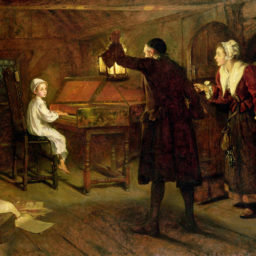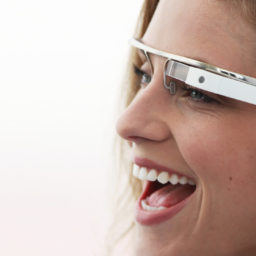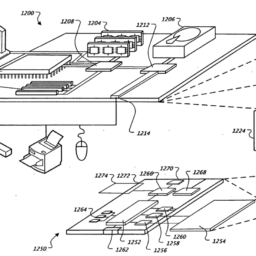The third internet generation for music is here.

Purpose
MUSIC x TECH x FUTURE is on a bit of a hiatus. I started it 2 years ago with the goal of shedding light on topics that I felt were being neglected.
Two years later, I feel more positive about the conversation in the music business. Besides that, great newsletters (like Platform & Stream) and writers (like Cherie Hu) have emerged and cover a lot of the topics I set out to cover with MUSIC x TECH x FUTURE. So what role can I play now in moving the conversation forward?
I have been doing a lot of thinking about what’s next. How will all these trends we discuss combine? What are we not talking about? Where are the opportunities? What is the next generation of artists doing? What do they know that we don’t?
By thinking about this, I have slowly been reinventing MUSIC x TECH x FUTURE along with the topics I cover. Music as a business is a complex ecosystem. Music as a phenomenon has kept generations of musicologists and philosophers occupied in discussions without conclusions for millennia. The question I have been answering is: what do I find important and what is nobody talking about?
Inspiration
By focusing on innovation in music, and always expanding my musical and artistic horizons, I have seen some developments over the last year that are starting to click together. I am now of the opinion that we are seeing the emergence of an important new generation of music that is going to spawn its own ecosystem.
Broadly speaking, music & the internet has had two phases so far:
Phase 1: the great disruption
Let’s call it the Napster moment. It led to the first new status quo. The rule it imposed was this: “anything that can be stored in digits can be communicated digitally through networks.” (this rule has also been called “information wants to be free”) This introduced music, and its business ecosystem, to the age of networks. Instead of moving products through distribution and media channels, it now moved through networks… and anyone that wanted to play the game, no longer had to find a way into the channels — everyone was on the network.

Phase 2: the MySpace moment
This phase is probably heralded by what I call the MySpace moment. MySpace grew as piracy thrived. Communities formed. We understood what social media could mean for music. Then MySpace collapsed and there was nothing there to take its place. Instead, the smartphone enabled the next generation of music and social platforms. On-demand music services like Spotify and SoundCloud appeared — both making an impact on modern music culture far exceeding MySpace’s. Communities formed again.
Phase 3: the SoundCloud moment
So what’s phase 3? The streaming economy is maturing. We are still figuring out how it will work exactly. Let the constant lawsuits between musicians, songwriters, labels, and streaming services be a testament to that. The shitty smartphones we used to have, have been traded in for phones that are more powerful than the computers on our desks a few years ago. AND they have cameras on both sides, AND we have fast internet, ALL the time. Queue YouTubers, Instagram stars, as well as producers rebooting their careers by becoming Snapchat personalities. 🔑
Meme culture went mainstream. People retiring now, with lots of free time on their hands, have been using the internet for 20 years. People reaching maturity now don’t know the world without internet. They may have been carrying smartphones before taking their first chemistry class. It introduces new questions and phenomena in our culture and in music. A 2017 headline that captured one of those phenomena well was: “Rap’s Biggest Stars Are Depressed & So Are Their Fans”.

OK OK OK SO WHAT IS PHASE 3?!
I can’t tell you. We can only see it once it’s there. But I can tell you how to be part of it.
With each of these shifts media culture shifted, so you have to look at what changes media culture is going through right now. Artificial intelligence, voice activated devices, augmented reality, and virtual reality all play tremendously important roles here. We still don’t know what the SoundClouds, Facebooks, Spotifys, PewDiePies and Justin Biebers (discovered through YouTube) of this phase will be, but we do know what technologies and media formats they may employ.
When MySpace started collapsing, everyone wanted to figure out what the ‘next MySpace’ would be. There was no next MySpace. Not in the way anyone was thinking about it. Ultimately, Facebook and SoundCloud filled that gap and took things way further than MySpace.
So what would the next SoundCloud look like?
This is what I know about the next SoundCloud. It can be clunky. In fact, it may be better if it’s not easy to use (e.g. Snapchat): kids will spend time figuring out how to move into virtual spaces where they can do their own thing. P2P services were not easy to use at first, torrents weren’t easy to use, and as elegant as it was, SoundCloud was not as easy to use as MySpace in its early days as long as you were trying to use it for MySpacey purposes.
It has to do 1 thing extremely well though (let’s call it ‘killer feature’). I remember that SoundCloud’s waveform & commenting feature was so great that artists were learning basic code, so they could remove MySpace’s standard players from their profiles and add SoundCloud’s waveform.
Then it has to have high cultural appeal. The waveform helped SoundCloud travel. It was cool. It’s hard to say what it will be like for the next SoundCloud… But perhaps it’s a cryptotoken. Blockchain is cool and cryptocurrencies are cool. They have cultural appeal, partly because of their association with ordering drugs online via the Tor network. But also because they represent dissent against the status quo, whether that’s valid or invalid. And the first cryptocurrency millionaires in music are already here. 50 Cent.
Perhaps Mat Dryhurst, a prolific thinker and artist (some may know him from his work with Holly Herndon), will be proven right and we will see a tokenized SoundCloud. Fingers crossed, because I admire what they’ve done and the role they’ve played in helping modern music & internet culture take shape.
But what about…
We assume too often that what comes next follows more or less linearly from what was there before. By doing so, we discount important developments and blind ourselves to their potential impact. In previous paragraphs, I have done exactly that. So it’s time to clean up my mess.
What is internet culture?
First of all, I need to clarify what I mean when I talk about internet culture or online culture. I am talking about audiovisual aesthetics, language, cultural memes like jokes, discourse about identity, politics, society and psychology. These emerge online. From bedrooms. From people of all ages and countries, connecting online to collaborate, iterate, remix, and discuss in virtual space.
This has manifested through music genres like vaporwave and nightcore (example below), but also more serious topics, such as a cultural emphasis on mental health, and identity (most notably gender identity). Then there’s a darker side to it too. The alt right has been able to create so much impact, from bedrooms, by using the same internet culture dynamics that previous examples utilize — eventually memeing Trump into the White House. They accomplished it as part of an alliance of mostly pre-internet organisations, institutions, and structures, but those organisations couldn’t have pulled this off without their internet army.
When I talk about internet culture, or online culture, I do not mean to suggest a separation between online and offline. I’m just pointing at the origin. As a matter of fact, the internet has become such a standard part of our lives that we are online even when we’re offline.
On a free weekend day, leave your phone at home. Go explore the city. Go to parts you’ve never been. Soon, you may get lost and want to check Google Maps. You may see something fascinating that you’d like to photograph and share on Instagram or Facebook. You might take a mental note to look that building up on Wikipedia when you get home to get more history.
By now, our minds are always online. Even when we believe we’re offline.
Always online
This is the number 1 thing that changed over the course of aforementioned phase 2. Even when smartphones arrived, we weren’t online all the time. But now we are. The fact that we are always carrying devices around that are connected to fast internet, with cameras on both sides, and with great screens compared to those 5–10 years ago, is one of the most important realities for the future of music.
Musical.ly, sold last year for around $1bn, comes to mind.
Mixed reality
How platforms deal with ‘mixed reality’ may be as crucial as the question of how the previous generation dealt with the rise of the smartphone. Back in Facebook’s younger days, the company was struggling to crack mobile and eventually took drastic measures to become mobile-first. Getting ahead of the problem this time, Facebook entered the virtual reality space in 2014 through the early acquisition of Oculus VR for $2bn.
But I don’t think it’s VR as a medium that will have the high cultural impact that the internet did. I think it’s about the interface to other aspects of our experience. It’s why I believe the below video of Mark Zuckerberg’s wife, Priscilla Chan, calling Mark from ‘the real world’ while he’s in a VR version of his home, was one of the most important tech showcases last year.
Skip to 4:50 if the video doesn’t auto-play from there.
Offline and online is blurring, so what does that imply for music?
Instreaming
Late last year I attended a gig that has really started falling into place since. A friend from Holland (Victor, also known as S x m b r a) was coming to Berlin to do a gig. I met him when he was mostly known for writing for Generation Bass — an important blog for underground bass music culture. He is extremely plugged in and knows so much about trends in music (particularly online niches), so I really trust him as a music curator.
He is also part of something called c a r e, which is described as:
c a r e is a post-internet party taking place online.
c a r e is about sharing together. c a r e is a future sensation.
this digital experience enables you to connect with internet kids worldwide. it also provides the opportunity to meet and discover artists and people which have common interests. we are a based world community that meets at url parties. we are glad to invite you to this virtual concept of partying. we hope you’ll enjoy the event! see you online.
 Through c a r e, he teamed up an interdisciplinary collective called Clusterduck which specialises in internet culture. Together they organised a “url / irl party” as part of Clusterduck’s Internet Fame project, which is part of the Wrong Biennale — a global event celebrating digital art.
Through c a r e, he teamed up an interdisciplinary collective called Clusterduck which specialises in internet culture. Together they organised a “url / irl party” as part of Clusterduck’s Internet Fame project, which is part of the Wrong Biennale — a global event celebrating digital art.
During the event, an audio & video stream connected people from their bedrooms to the ‘irl’ event. These people could interact with each other online, but they were also “instreamed” so their chat messages & webcam feeds on Tinychat would be shown inside the party. The founder of c a r e, who wasn’t present in person, is even billed on the poster and broadcasted a DJ set from url to the irl space in Berlin.
A lot of people at the ‘irl’ part of the event were familiar with some of the people they saw on the ‘url’ part displayed on a prominent screen above the dancefloor & bar. So it created this sense of community & connection and blurring of irl & url.
You could walk into such an event and think it’s just some young folks who set up some webcams, but when you see it as part of the greater trends in our all-absorbing media & tech culture, what was happening there becomes way more significant.
Internet culture and music
I will be going way deeper into this in future articles and newsletters, but I want to give you an example of what I think people should be paying attention to.
For example, the Sponsored Content album by an artist called Antwood. It’s a perfect example of the post-internet avant-garde expression in music. Antwood:
“In the past year, I found that ASMR [dubbed by Google as the biggest YouTube trend you’ve never heard of], which I had previously used as a source of foley in my music, was a fairly effective sleep aid. I’d been using the videos in this way for a few months, when I noticed a popular ASMR YouTuber announced a plan to incorporate ads into her videos; quiet, subtle ads, woven into the content. What bothered me about this was that these ads would target viewers, such as myself, during times of semi lucid vulnerability. This disturbed me, and I unsubscribed.
Sponsored Content explores this idea of subversive advertisement, at least superficially. It’s obviously about the ubiquity of ads and the commodification of online content. The unlikely placement of ads in the music aims to force the listener to become hyper-aware of being advertised to rather than passively internalizing it. But after the record was finished, it became undeniable that really it wasn’t so much a “concept record” about advertisement; it’s as much about intentionally devaluing the things I’ve invested myself into, and over-complicating my work. When I realized this, I considered taking the ads out, and playing the music straight. But I left the record as it is: honest, flawed, with a little humour, and slightly up its own ass.”
I’ve compiled over 25 hours of albums and releases that I feel adhere to this trend in music (Spotify playlist). My playlist biases towards the club & nightlife variants of this trend, but the visual and musical aesthetics & themes should give you a good understanding of what this is about. The most famous example is probably Arca, who has produced for Kanye West and Björk.
Aforementioned Holly Herndon, who toured with Radiohead, uses AI in her work: “We have an AI baby that we’re training on our voices; on our voices and on the voices of our ensemble. Yeah, it’s learning how to talk and how to sing, so it’s freaking weird”.
Another great example of the post-internet trend in arts and music is YouTuber Poppy, who recently released an album called Poppy.Computer on Mad Decent.
Besides the obvious commentary on internet culture & society on her channel, Poppy plays with the uncanny valley hypothesis of robotics professor Masahiro Mori. The hypothesis suggests that humans feel fine with robots that are obviously not human, but the more semblance these robots get to humans, the stronger our feelings of eeriness and revulsion.
In music, perhaps the best known example of a post-internet genre is vaporwave:
From boardroom to bedroom
Over the last 2 years, I have written a lot about the music business ecosystem. Always with an innovative angle, but often focused on the type of big issues that are discussed and decided about in boardrooms. While those things are immensely important, it’s also reactive. Reaction doesn’t set trajectory — it can only adjust it.
My focus is going to shift from the boardroom to the bedroom. From complex issues with big financial implications, to profound ideas that may not always have a clear link to monetization. It is a focus on the creator, the inventor, the innovator.
The newsletter has always placed emphasis on utility. I want what I do to be useful in some way. The most important way in which I try to do that, is by showing what is next, which I will continue to do. What is next is already here — you just have to know where to look.
This is our culture we are talking about. That is primary.
That is what enables the business around it. Which is secondary.
MUSIC x TECH x FUTURE. Those words say it all.

(This post originally appeared on Medium, which I’m moving away from. When you can avoid the large platforms, you should.)


 So, in dealing with this new media reality, you go to where the audience is. Apparently that’s no longer in app stores, but on social networks and messaging apps. Some of the latter, and most prominently Facebook Messenger, allow for people to build chatbots, which are basically apps inside the messenger.
So, in dealing with this new media reality, you go to where the audience is. Apparently that’s no longer in app stores, but on social networks and messaging apps. Some of the latter, and most prominently Facebook Messenger, allow for people to build chatbots, which are basically apps inside the messenger.










